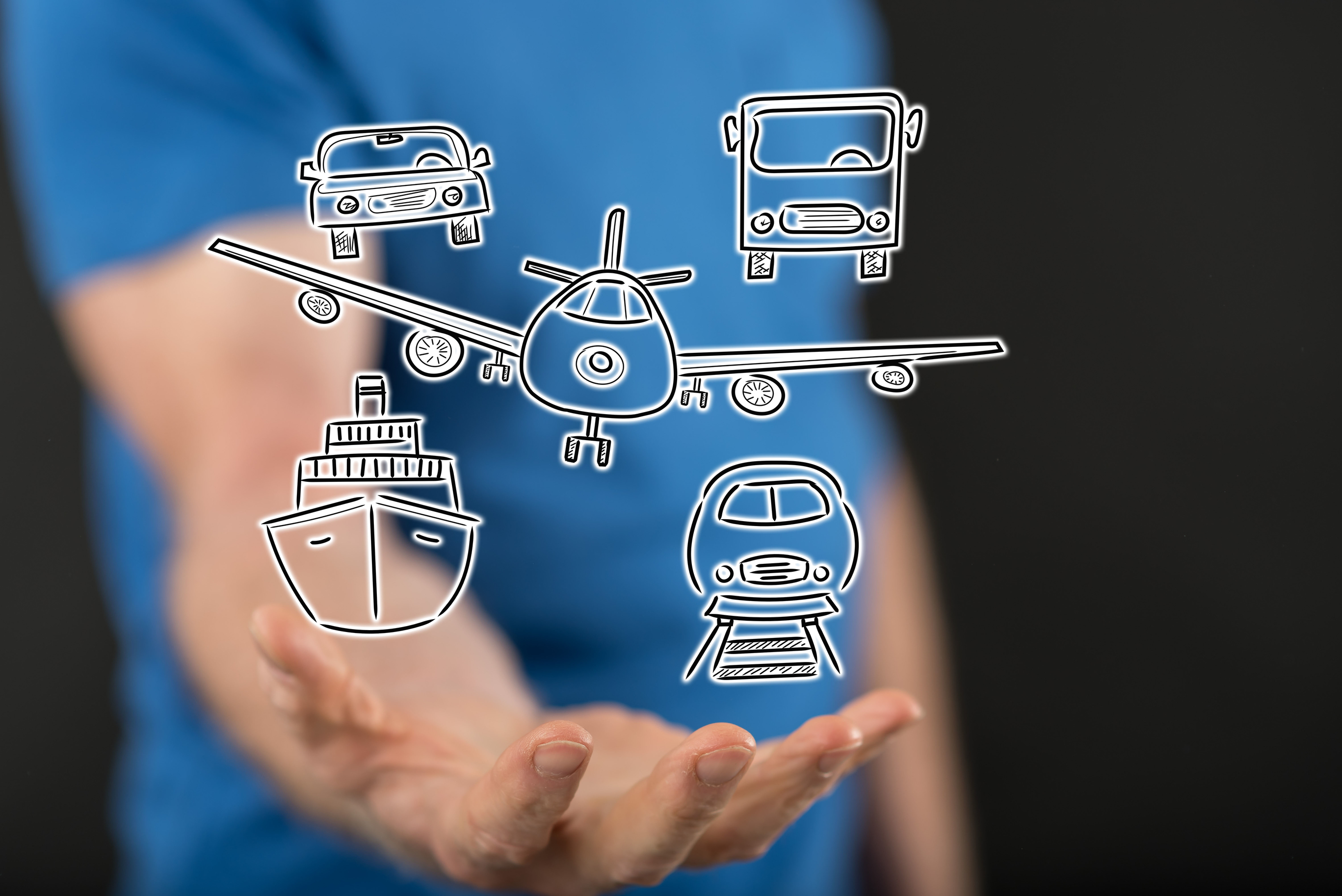IoT (Internet of Things) is increasingly being used across all industries, and transportation is no exception. “Smart transportation” includes the use of IoT in transportation systems. The smart transportation market is expected to grow to more than $130 billion by 2024. IoT technologies are capable of delivering benefits to all areas of the transportation industry, including infrastructure, railways, and air transport.
Today, let’s take a closer look at the commercial transportation and trucking industry, and how intelligent transportation systems and IoT in logistics can provide cost savings, increased safety, and other improvements. Keep in mind that many of these IoT devices, technologies, and techniques will work similarly in other industries, so you might be able to apply what you read here to your own business.
IoT applications in commercial transportation
There are countless applications for smart sensors, GPS tracking, and other IoT devices in the commercial transportation and trucking industry. In fact, as the industry relies on these systems further, some IoT applications in transportation are even being mandated. For example, the Federal Motor Carrier Safety Administration now requires commercial vehicle carriers and their drivers to use an Electronic Logging Device (ELD) to capture Record of Duty Status (RODS)—mileage, driving time versus idling time, mandated rest periods, and related stats.
ELDs save drivers hours of filling out paperwork to record this information, and reduce the errors from manual entry. It isn’t just important for safety regulations—it provides value to the business. That’s why many industry veterans are going beyond this mandate and using IoT devices in other ways to improve their bottom line.
IoT applications in transportation also deliver the following benefits:
- Cost-savings
- Operational and supply chain efficiencies
- Improved customer service
- Increased driver safety and job satisfaction
Here’s how:
- Sensors in commercial vehicles and trucks collect, send, and receive data. Drivers are alerted to hazardous conditions in real-time to avoid crashes and traffic congestion. Fuel consumption can be monitored and evaluated for efficiencies. This makes long-hauls significantly more efficient (and less expensive).
- Trucks can be monitored for wear and tear so that potential problems can be addressed before a vehicle breaks down. This is accomplished by using a Machine Learning system to analyze the raw data captured by IoT sensors. Based on past cases and events, they can use the new data to predict problems that may occur in the near future. This helps reduce repair costs—preventative maintenance is usually cheaper than repair or replacement.
- Freight conditions can be tracked and monitored throughout the driver’s journey. There are many types of cargo that may be sensitive to the elements—medical and perishable cargo, for instance, often needs to remain above a certain temperature during transit. Other cargo can be sensitive to rough handling and vibration. Sensors can alert drivers and carriers to unacceptable variances in shipping conditions, so they can be resolved immediately.
- Monitoring cargo tampering is more efficient and secure with IoT sensors. Cargo can be monitored to determine if it has been tampered with, or even simply opened, and when. Pharmaceutical or hygiene products are particularly sensitive to tampering, and it is important to identify when something is improperly opened, when it was opened, and which specific items were tampered with.
- Vehicle capacity can be evaluated to identify spare room. This data can be analyzed to consolidate routes and provide the most cost-effective delivery route, down to the best parking spot for unloading cargo.
- Drivers can be monitored for physical condition and performance. Is the driver braking too hard or wasting fuel? Are they speeding, endangering themselves and the cargo? Are they getting drowsy? New facial tracking cameras can actually see that happening. Alerts about unsafe driving can be sent to managers, who can take the appropriate action.
- Carriers can monitor the location of every truck in their fleet and when they will arrive at their destinations. Navigation systems identify the optimal route based on weather and traffic conditions. Drivers can be re-routed in real-time.
- Loading and unloading is faster with cargo that is tagged with sensors, RFID tags, or low-energy Bluetooth devices. Drivers equipped with smartphones and tablets remain connected to headquarters, who is immediately informed about changes in delivery status and schedules.
Taking a step back: What does this mean for you?
Commercial transportation and trucking is not the only industry embracing and benefiting from IoT—any industry can apply these technologies. However, when transportation companies use them, other industries are directly impacted. For instance:
- Insurance—Drivers can be monitored in real-time, and managers can take action if they are driving inappropriately. This reduces the overall risk for the insurance provider, and can impact their rates. Safer driving means fewer accidents, which means fewer claims.
- Retail stores—Inventory management is hard enough without shipping delays. Retail stores prefer to order as close to a precise amount of product as possible—they don’t want to have too many sitting in their warehouse, but don’t want there to be too many missed opportunities for a sale. IoT in transportation can dramatically increase transparency into a shipping company’s activities. A retail store can know precisely how many items are going to arrive, when they’re going to get there, and get an idea of how many are damaged or tampered with. This helps them keep their inventory at just the right level, which helps their bottom line.
- Home and commercial repair services—Service vehicles can be monitored for predictive maintenance, which reduces repair costs. Connected service technicians have real-time access to customer data and expert help, which helps them close tickets without repeat visits. Service calls are completed and closed out on the first visit. Route optimization reduces fuel costs, and allows more calls to be completed per day, which makes customers happier—and more loyal.
Countless other industries are directly or indirectly impacted by IoT in transportation. How many businesses rely on vehicle transport, inventory deliveries, or repair services? When applied to a retail business, for example, IoT can provide different benefits, such as theft monitoring, and more personalized customer experiences. To read more on specific IoT applications in retail, check out our recent blog on the topic.
Intelligent transportation systems let carriers make smarter, more informed decisions. These IoT technologies need to be embraced to keep up with the competition. Learning how IoT can benefit your business is the first step toward streamlining your operations, cutting costs, and increasing revenue. Consult an expert team if you’re unsure how to properly implement IoT technologies in your business.

